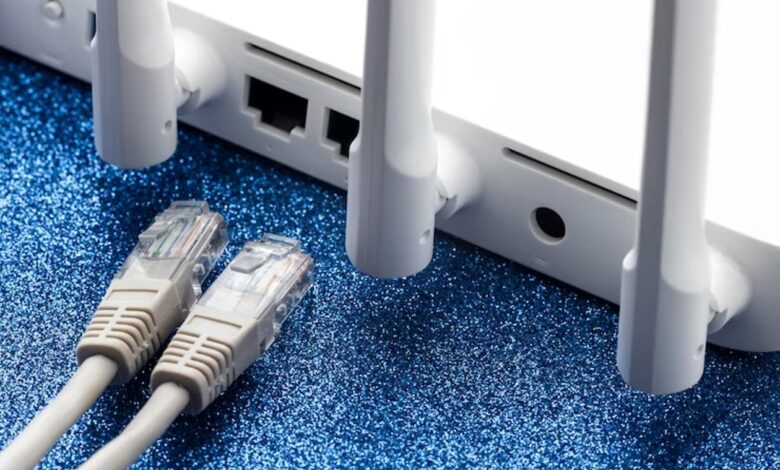How to Install an Ethernet Wall Plate

In our ever-connected world, having a strong and reliable internet connection is essential. One way to achieve this is by installing an Ethernet wall plate. This article will guide you through the process of setting up an Ethernet wall plate to ensure that you have a stable, high-speed internet connection in your home or office.
Understanding Ethernet Wall Plates
Ethernet wall plates, also known as keystone wall plates, are essential components for creating wired network connections within your living or workspace. These plates serve as junction boxes for Ethernet cables, allowing you to connect devices like computers, gaming consoles, and smart TVs directly to your network.
Tools and Materials You’ll Need
Before you begin, gather the necessary tools and materials:
- Ethernet wall plate
- Ethernet cable
- Low-voltage mounting bracket
- Wallboard saw
- Screwdriver
- Measuring tape
- Pencil
- Cable tester
- Wire stripper
- Faceplate
- Wall anchors (if needed)
Read More: Who Will Internet Impact Society in 2023?
Preparing Your Workspace
Before you start the installation process for your Ethernet wall plate, it’s essential to prepare your workspace properly. This step ensures not only the successful installation but also your safety throughout the process.
- Safety First: The most crucial aspect of preparing your workspace is ensuring safety. Begin by turning off the power to the room where you’ll be working. This step is essential to prevent any electrical accidents, especially if you’re making holes in the wall.
- Gather Your Tools: Before you get started, make sure you have all the necessary tools and materials within reach. You wouldn’t want to pause the installation midway to search for a tool. The tools and materials you’ll need include an Ethernet wall plate, Ethernet cable, low-voltage mounting bracket, wallboard saw, screwdriver, measuring tape, pencil, cable tester, wire stripper, faceplate, and wall anchors (if needed).
- Clear the Area: Clear the area around the wall where you plan to install the Ethernet wall plate. Remove any obstacles, furniture, or wall decorations that might hinder your work. A clean workspace ensures you have ample room to work comfortably and accurately.
- Protect Flooring and Furniture: Lay down a drop cloth or old newspapers to protect the floor, furniture, and any nearby belongings. This precaution helps avoid any damage or debris from the installation process.
- Double-Check Power: Before proceeding, double-check that the power in the room is indeed off. You can use a portable lamp or a non-contact voltage tester to ensure there’s no electrical current running through the wall where you’ll be working.
By taking these steps to prepare your workspace, you’ll create a safe and organized environment for the installation of your Ethernet wall plate. Safety is paramount, so make sure to double-check the power status and keep your workspace clear of any potential obstacles.
Locating the Optimal Placement
Determine where you want to install the wall plate. It’s usually best to place it near your router or switch to minimize cable length. Mark the desired location with a pencil.
Running Ethernet Cables
Measure and cut the appropriate length of Ethernet cable to run from your router to the wall plate location. Ensure a little extra length to avoid straining the cable.
Cutting the Wall Opening
Using a wallboard saw, carefully cut an opening for the low-voltage mounting bracket where you marked the wall. Be cautious not to damage any existing electrical wires.
Mounting the Wall Plate
Attach the low-voltage mounting bracket securely to the wall. Ensure it is level and flush with the wall surface.
Wiring the Ethernet Jack
Now, it’s time to wire the Ethernet jack. Strip the cable’s outer insulation and connect the wires to the jack following the color-coding standard (usually T568A or T568B). This is crucial for maintaining a reliable connection.
Securing the Cables
Use cable clips to secure the Ethernet cable to the wall neatly. This prevents damage and tripping hazards.
Testing Your Connection
Before closing everything up, use a cable tester to ensure that the Ethernet connection is working correctly.
Cable Management
Cable management is a crucial aspect of installing an Ethernet wall plate. Proper cable management not only ensures a tidy and organized appearance but also helps prevent damage to the Ethernet cable and minimizes tripping hazards. Here’s how to manage your Ethernet cables effectively:
- Use Cable Clips or Ties: Secure the Ethernet cable to the wall using cable clips or ties. These clips are designed to hold the cable in place and prevent it from hanging loosely. Ensure the clips are evenly spaced to create a neat and uniform look.
- Route Cables Neatly: Route the Ethernet cable along the wall, following a logical path. Avoid sharp bends or kinks in the cable, as these can damage the wires inside and affect the signal quality. Instead, create gentle curves to guide the cable smoothly.
- Avoid Interference: Keep Ethernet cables away from sources of interference, such as electrical wiring or appliances. This separation helps maintain a strong and stable connection by reducing the risk of electromagnetic interference.
- Label Cables: If you’re dealing with multiple Ethernet cables, label them to identify their purpose. This labeling simplifies troubleshooting and maintenance in the future, as you’ll easily distinguish between different cables.
- Secure Excess Cable Length: Ethernet cables often come in varying lengths, and you might have more cable than needed. Use cable ties or clips to secure the excess cable length. This not only looks neater but also prevents tangling and tripping hazards.
- Use Cable Raceways: For longer cable runs or situations where cables need to cross a room, consider using cable raceways or conduit to conceal and protect the cables. This is especially useful if you want to maintain a seamless and clean appearance.
- Final Inspection: After securing the cables in place, do a final visual inspection to ensure that everything looks organized and well-arranged. Verify that no cables are hanging loosely or are at risk of being damaged.
Effective cable management is not only aesthetically pleasing but also functional. It prolongs the life of your Ethernet cables, ensures a reliable network connection, and minimizes the risk of accidents. By following these cable management practices, you can enjoy a tidy and organized network setup in your home or office.
Final Touches
Attach the Ethernet wall plate to the mounting bracket, ensuring it’s firmly in place.
Troubleshooting Tips
If you encounter any issues, such as a weak connection or no connection at all, refer to our troubleshooting tips to identify and resolve common problems.
Read More: The Beauty of Home Decor: A Guide to Creating a Cozy Space
Conclusion
Installing an Ethernet wall plate is a valuable skill that can greatly enhance your internet connectivity. By following the step-by-step guide provided in this article, you can ensure a stable, high-speed internet connection within your home or office.
In this guide, we covered essential aspects of the installation process, from preparing your workspace to proper cable management. These steps are designed to help you create a professional and efficient network setup.
By having a well-organized workspace, ensuring safety, and following best practices in cable management, you not only achieve a clean and tidy appearance but also maintain the integrity of your Ethernet Wall Plate cable connections. This, in turn, contributes to a stable and reliable network, which is essential for today’s connected world.
FAQs
Can I install an Ethernet wall plate by myself?
Yes, you can install an Ethernet wall plate on your own by following the steps outlined in this guide.
Which Ethernet cable standard should I follow, T568A or T568B?
You can choose either standard, but it’s crucial to maintain consistency. Make sure to use the same standard for both ends of the cable.
What should I do if my cable tester indicates a problem?
Check the wiring of the Ethernet jack and ensure that the cable is securely connected. Re-test to confirm the issue is resolved.
How long can my Ethernet cable be without losing signal quality?
The maximum recommended length for Ethernet cables is 100 meters (about 328 feet). Beyond this, signal quality may degrade.
Do I need a professional for cable installation in older homes with thicker walls?
In some cases, it may be advisable to consult a professional, especially if you’re dealing with challenging wall materials or need to run cables over longer distances











